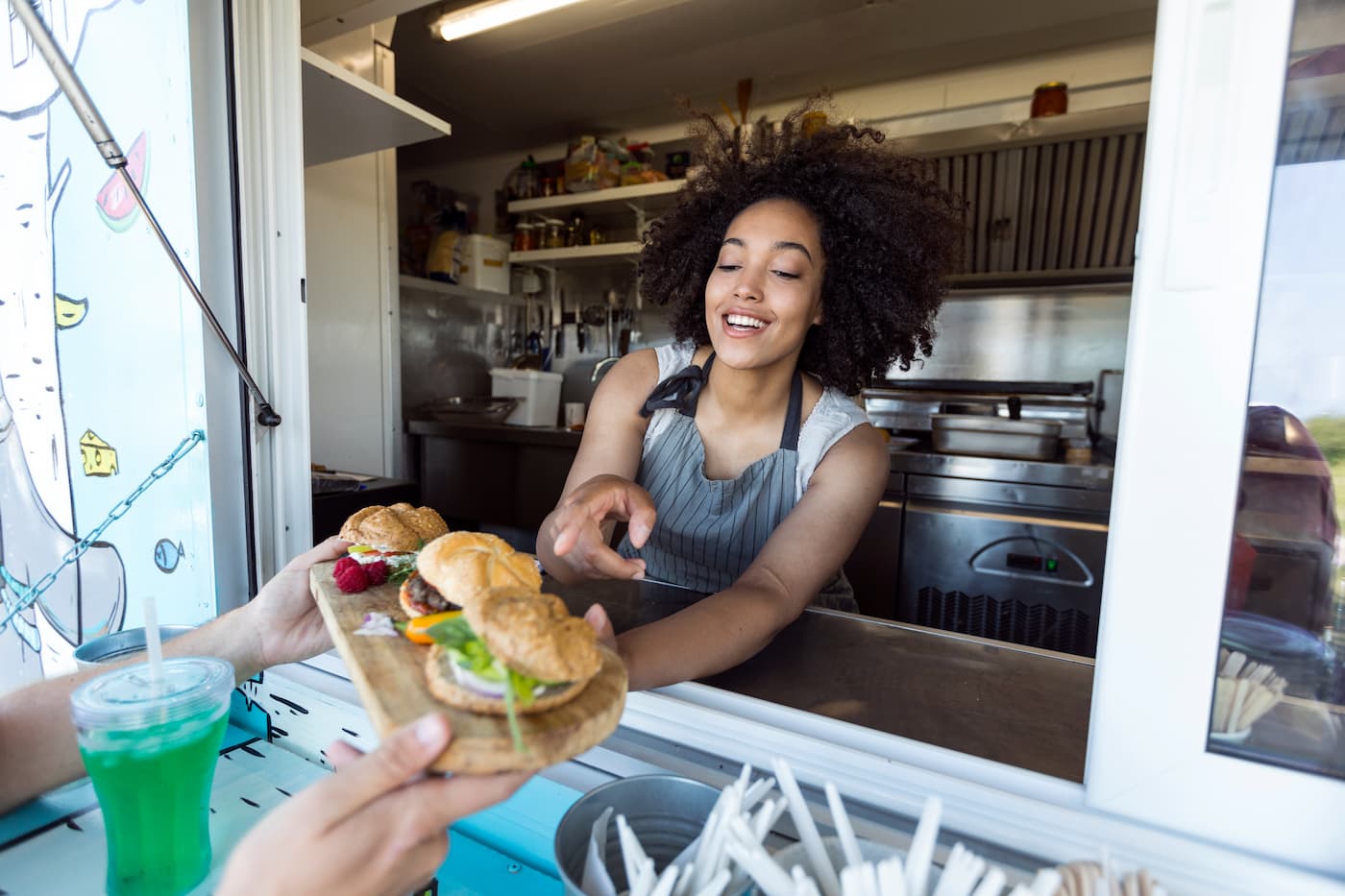How to start a food stand
Editorial Team
5 min read
Opening a traditional restaurant can carry a lot of risk. Once you choose a location, you’re locked in – potentially for years depending on your lease agreement. Over that time, you’ll likely spend a lot of money paying for rent and utilities and other expenses that incur from operating at a brick-and-mortar location.
By contrast, food stands and trucks are mobile, allowing them to relocate to the hottest spots at any moment. The startup costs are also considerably lower, with the vehicle often being the largest expense.
Better still, you can set up shop anywhere. Major urban centers with high-volume foot traffic tend to be the most lucrative, with some food carts generating $3,000-plus a day. However, don’t discount county fairs and other traveling venues – many of which generate heavy demand for hot dogs, ice cream, burritos, funnel cakes, tacos, smoothies, and other delicious treats you could conceivably sell from a mobile food business.
Many traditional restaurants also invest in dedicated food stands to expand their reach. Going mobile allows them to set up popup shops or attend local festivals.
For more reasons to launch a career in this field, be sure to read our guide on the benefits of starting a food truck business. The rest of this article discusses opening a food stand and taking payments from your customers.
How to start a food stand business
Every jurisdiction is slightly different. Thus, the exact steps for launching a food stand might vary depending on the geographic area in which you plan to serve. Below are some of the most general aspects you’ll need to consider when setting up your food stand.
1. Identify your target market
This is the most important starting step for all businesses. Your target customer determines the what, where, and how much of whatever you sell. There must be a ready market for your culinary creations in order for your business to grow and succeed. For tips on how to create customer personas, be sure to read our article here.
2. Assess the competition
When starting a food stand business, you need to check out the local competition. This means tracking the locations of other mobile food stands. It also means being aware of brick-and-mortar eating establishments within walking distance of every place you plan to sell food.
There’s no rule preventing two taco stands from operating on the same block, but it’s important to understand what you’re up against before committing any resources.
3. Obtain financing
Starting a food stand can cost anywhere from a few thousand dollars to several tens of thousands of dollars. It all depends on the type of equipment you will need and whether you’ll be renting a stand, purchasing a pre-built structure, or buying into a franchise. Local permitting and food stand requirements can also affect startup costs.
If you can finance everything out of pocket, that will help you start off on the right foot without any debt. Otherwise, you may need to seek funding from investors, banks, friends, and family members. Either way, having a business plan is essential. Be sure to check out our small business resource page for more tips on starting a new venture.
4. Register your food stand business
The next step involves choosing a legal structure for your business.
- Sole proprietorships are common among solo entrepreneurs due to the low startup and maintenance costs. However, with this legal structure, your personal and business assets become intertwined.
- Partnerships make sense if there are two or more owners involved with the business.
- Corporations are favored by many larger and more established companies due to the legal protections this structure offers.
- Limited liability companies (LLCs) offer a good balance of setup effort and legal protection.
For a longer explanation of each legal structure, read our guide on how to start a business.
5. Source equipment
The type of food stand you launch determines what kind of equipment and supplies you’ll need.
For example:
- If selling canned goods, you may only need displays, tables, shelves, and a vehicle to transport these items.
If cooking meals or keeping inventory cold, you’ll need a lot more equipment – e.g., stoves, freezers, and gas canisters. These extra items may also increase your permitting and licensing costs (covered in the next section).
6. Obtain permitting and licensing
Most municipalities require that food stands secure proper permitting before they operate. Contact your local city hall to find out what requirements apply to your business. If you plan to serve different geographic areas, you may need to go through a separate permitting process with each jurisdiction.
7. Start taking payments
Although it’s possible to sustain a cash-only food stand business, the pandemic has encouraged many businesses to accept card-based and contactless mobile payment options that don’t involve a direct exchange between merchants and customers.
At Clover, we offer a range of point of sale (POS) solutions designed for food stands. Our full-featured countertop POS terminals can handle even the most complex payment tasks – including barcode scanning and receipt printing. To quickly accept payments in the field, we recommend the Flex and Go – two mobile POS terminals that can securely process credit, debit, and contactless payments wherever your food stand business takes you.
Launching a business isn’t easy, but with the tips above, you now have the information you need to go from idea creation to your first hungry customer. When you’re ready to start making sales, keep Clover in mind. Our POS solutions help make taking payments and running your business easier.
To request a free demo of our POS solutions, contact a Clover Business Consultant today.
This information is provided for informational purposes only and should not be construed as legal, financial, or tax advice. Readers should contact their attorneys, financial advisors, or tax professionals to obtain advice with respect to any particular matter.
Related Posts
Keeping your sales safe & sanitary
Find money-making restaurant marketing ideas and sales techniques
Popular Topics
Stay in touch
Sign up and learn more about Clover.
Thank you for your subscription!
More posts about starting a small business
eBook





